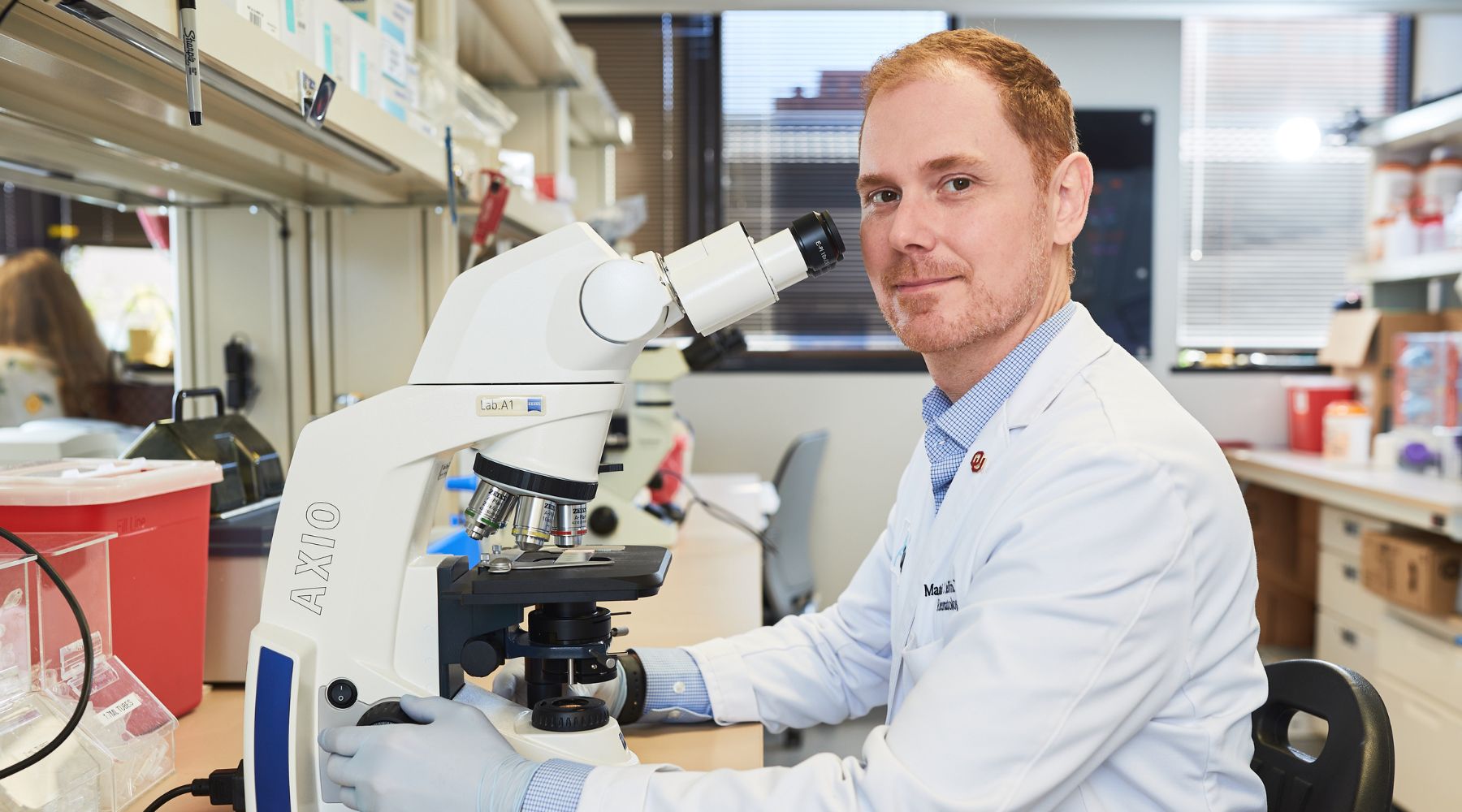Imagine if a single injection could stop the progression of the most common form of arthritis – and perhaps even reverse some of its debilitating damage.
A new federal agency has targeted this as a “moonshot” project and has tabbed an Oklahoma Medical Research Foundation physician-scientist to help make the dream come true.
OMRF rheumatologist Matlock Jeffries, M.D., will receive $2 million from the Advanced Research Projects Agency for Health (ARPA-H) to test a single-injection treatment that promotes tissue regeneration and restores joints in osteoarthritis, the most widespread form of the joint disease.
“If this works, it would be one of the most dramatic accomplishments of modern biomedical science, and it could offer hope for treating one of the most common, debilitating, and costly conditions we face as a society,” Jeffries said.
Osteoarthritis, the leading cause of chronic disability in the U.S., limits the mobility of at least 32 million Americans. Most people with OA take prescription or over-the-counter drugs to lessen inflammation and pain, but no existing drug slows or reverses the disease itself.
“Right now, the only treatment option that offers patients a chance of significant improvement is joint replacement, and about 1.5 million U.S. adults undergo this procedure every year,” Jeffries said. “Joint replacement isn’t without risks, requires significant recovery and rehabilitation, and it costs the U.S. healthcare system almost $50 billion a year.”
ARPA-H, part of the U.S. Department of Health and Human Services, was established in 2022 to support high-risk, high-reward biomedical research that would not be accomplished through traditional research channels. Its first target is osteoarthritis, and on March 26, it announced funding for the project involving Jeffries.
Washington University in St. Louis is leading the project, with funding of up to $31 million over five years. Jeffries’ role involves recruiting, treating and evaluating patients with the novel injection therapy at OMRF’s newly created Osteoarthritis Center of Excellence, which Jeffries directs.
OA is twice as common in women and has the highest prevalence in Black and Hispanic populations. Jeffries was chosen in part due to OMRF’s access to American Indians with OA.
“Through this revolutionary program, we seek to change how we treat osteoarthritis for millions of Americans by regenerating joint tissues, a task once believed to be impossible,” said Ross Uhrich, ARPA-H Program Manager for Novel Innovations for Tissue Regeneration in Osteoarthritis. “Today, we take the first step towards creating a future without OA.”



